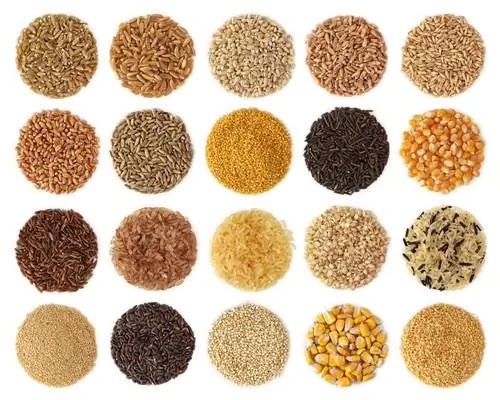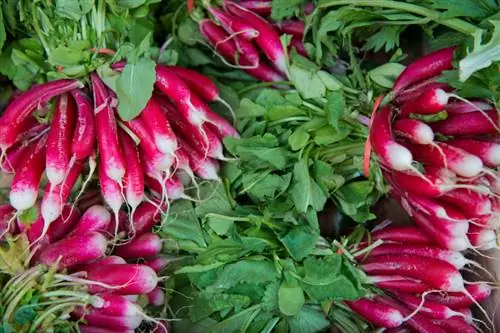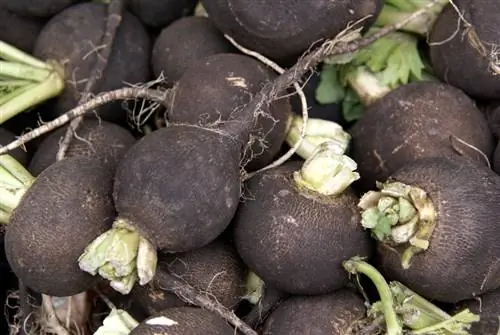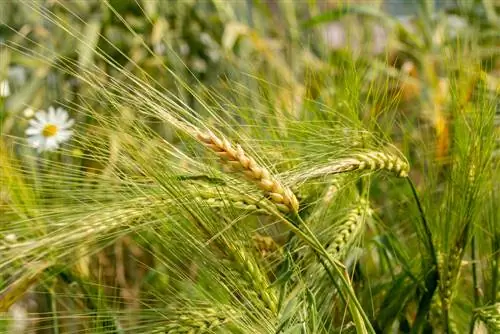- Author admin [email protected].
- Public 2023-12-16 16:46.
- Last modified 2025-01-23 11:21.
How many types of grain can you think of when asked to list them? Wheat, corn, rice? You are definitely familiar with these three varieties. After all, without their cultivation it would not be nearly possible to feed the world's population. On the other hand, if you mention emmer, spelled and einkorn, you are wrong. Because these avoidable varieties are only subspecies of the seven main groups. You can read about what they are and what makes them special on this page.

What types of grains are there?
There are seven main groups of grain varieties: rice, corn, oats, rye, barley, millet and wheat. All of these types of grain belong to the plant genus of sweet grasses and are grown in various regions around the world to meet the nutritional needs of the population.
The seven main groups
All grain varieties belong to the plant genus sweet grasses. There are seven main groups:
- Rice
- Corn
- Oats
- Rye
- Barley
- Millet
- Wheat
Rice
- Latin name: Oryza
- Main growing area: humid tropical regions
- Basic foods in: Asia
- preferred locations: swampy ground
- Ingredients: iodine, iron, fiber, phosphorus, magnesium, little fat
- Characteristics: 20-30 stalks per plant with a length of 50-160 cm, spikes with individual panicles
- Divided into three main groups: medium-grain rice, short-grain rice, pointed-grain rice, around 8,000 varieties in total
- Use: primarily for cooking
Corn
- Latin name: Zea mays
- monoecious separate sexes
- maximum growth height: 2.5 m
- Stalks up to 5 cm thick
- Inflorescence: cobs instead of ears
- undemanding to the soil, also tolerates drought and heat
- Pollination: by the wind
- Stay Food in: America
- Time of sowing: late spring
- Use: side dish, salads, animal feed, popcorn
- Taste: floury, sweetish
- Harvest time: September to October
- Corn is not a vegetable!
Oats
- Latin name: Avena sativa
- Features: downward-sloping, 50 cm long panicles instead of ears with two grains at the top
- Growing area: as a summer crop in Germany
- preferred location: temperate climate, lots of precipitation
- Fertilization: self-fertilizer
.- Special feature: gluten-free (therefore not suitable for baking)
- Uses: oat flakes, flour, plant drink, bran
- Taste: mild, nutty, sweet
- Harvest time: mid-August
Rye
- Latin name: Secale cereale
- Cultivation is increasingly declining
- Characteristics: frost hardy
- Appearance: medium-long awns
- Color of the grain: gray-yellow
- Structure of the ear: two grains in two rows on one ear axis
- maximum height: 65-200 cm
- Length of ears: 5-20 cm (slightly curved due to the weight of the grains)
- he althy ingredients: magnesium, iron, fiber
- Use: muesli, black or sourdough bread, for making vodka
- Taste: strong-aromatic
- Harvest time: July to August
Barley
- Latin name: Hordeum vulgare
- the fastest growing cereal species
- very adaptable and robust
- Appearance: long awns, lower grains have longer hairs than the upper ones, thick tapered grains
- maximum height: 70-120 cm
- Leaves: 1-2 cm narrow, 25 cm long
- Origin: South Asia
- Uses: Spring barley as food, winter barley as livestock feed, for brewing beer and m alt coffee
- Taste: nutty-aromatic
- Harvest time: winter barley in spring, spring barley in July and August
Millet
- Subdivision: large-grain sorghum millet, small-grain millet millet
- Property: gluten-free, one of the oldest types of grain
- low location requirements
- maximum height: 5 m
- resembles corn
- Use: porridge, salad, flatbread, side dish
Wheat
- Latin name: Triticum aestivum
- most important grain variety in Germany
- Division: hard and soft wheat, winter and spring wheat
- Location requirements: mild climate, yet frost hardy, heavy, nutrient-rich soil
- maximum growth height: 0.4-1 m
- does not form awns
- Grains: furrowed back, elongated-oval, hairy, green
- Length of ears: 6-18 cm
- Uses: animal feed, pasta, alcohol, baked goods, starch
- Taste: mild
- Harvest time: midsummer






